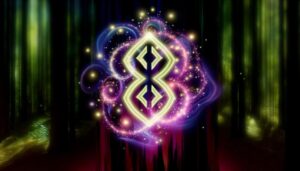Historical Meaning of Male and Female Symbols?
The male (♂) and female (♀) symbols, derived from the astrological icons of Mars and Venus, reflect broader cultural and historical contexts. The male symbol, portraying Mars, embodies characteristics such as strength and aggression, while the female symbol, representing Venus, signifies beauty and fertility.
These symbols were integral to alchemy and linked with metals like iron and copper, illustrating a dualistic worldview. They have evolved alongside societal understandings of gender roles and identities.
In contemporary discussions, these symbols also face criticism for excluding non-binary identities. For a comprehensive understanding, it is essential to appreciate their multifaceted significance and ongoing evolution.
Key Takeaways
- The male symbol represents Mars, symbolizing strength, aggression, and masculinity.
- The female symbol represents Venus, embodying fertility, beauty, and femininity.
- Ancient civilizations used these symbols for astronomical and alchemical purposes.
- These symbols reflect complementary forces and gender roles in a dualistic worldview.
- Modern interpretations include non-binary identities, challenging traditional gender binaries.
Historical Origins

The historical origins of the male and female symbols can be traced back to ancient civilizations, where they were initially used in astronomical and alchemical contexts. These symbols, the male (♂) representing Mars and the female (♀) representing Venus, were linked to the gods associated with these planets in Greco-Roman mythology.
The male symbol, a circle with an arrow, symbolized Mars' shield and spear, while the female symbol, a circle with a cross, depicted Venus' mirror. Beyond their celestial correlations, these symbols were later adopted in alchemical traditions to denote metals: iron for male/Mars and copper for female/Venus.
This dual usage underlines the interconnectedness of early scientific and mythological thought, reflecting broader cultural understandings of gender and elemental properties.
Ancient Symbolism
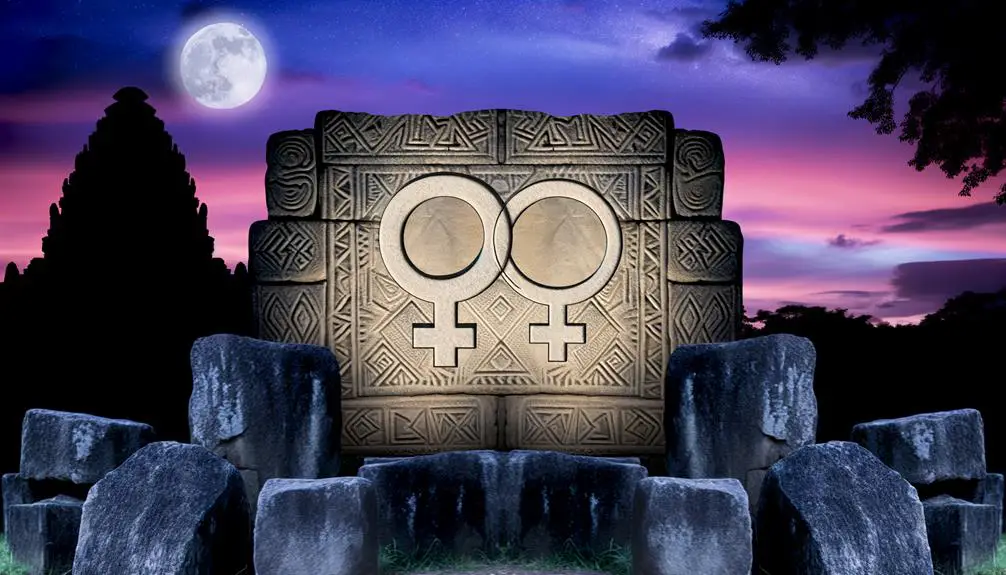
Ancient symbolism surrounding the male and female symbols reveals deep-seated cultural and philosophical beliefs about gender roles and natural phenomena.
The male symbol (♂), often associated with Mars, signifies strength, aggression, and action, reflecting societal expectations of masculinity.
Conversely, the female symbol (♀), linked to Venus, represents fertility, beauty, and nurturing, encapsulating traditional feminine ideals.
These symbols were not merely arbitrary; they embodied a dualistic worldview where male and female principles were seen as complementary forces essential to balance and harmony.
Ancient civilizations, from the Greeks to the Egyptians, incorporated these symbols into their mythologies, rituals, and daily life, underscoring a sophisticated understanding of gender as intertwined with the cosmos and human experience.
Astronomical Connections
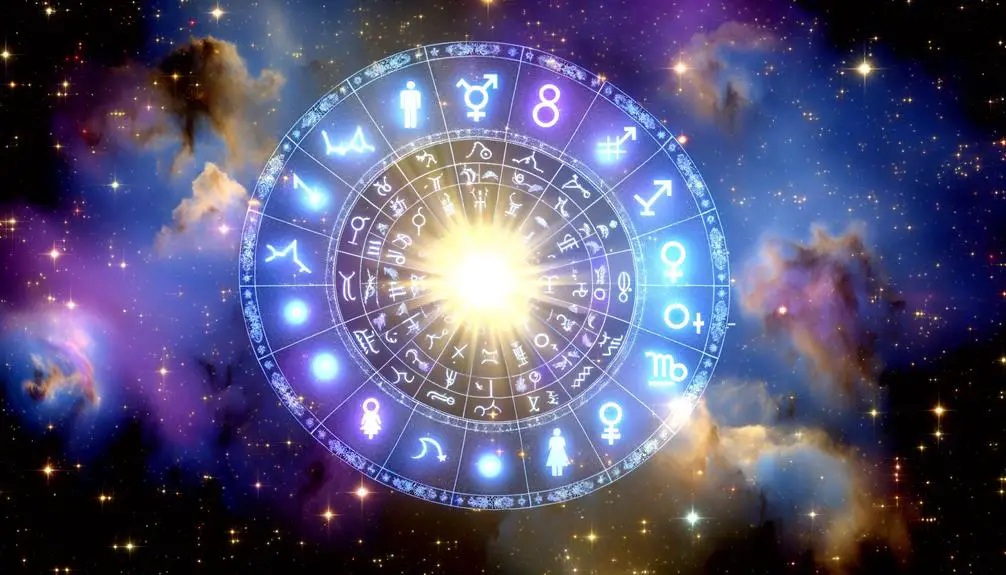
Curiously, the male and female symbols are deeply rooted in astronomical traditions, reflecting humanity's early attempts to understand the celestial bodies and their influence on earthly life.
These symbols, ♂ for male and ♀ for female, are not arbitrary; they are derived from classical planetary symbols representing:
- Mars (♂): The male symbol originates from Mars, the Roman god of war, symbolizing strength and aggression.
- Venus (♀): The female symbol comes from Venus, the Roman goddess of love and beauty, embodying femininity and fertility.
- Alchemy: These symbols were also used in alchemical traditions to denote specific metals, with Mars linked to iron and Venus to copper.
This integration of astronomy and mythology underscores a profound connection between celestial observations and human cultural expressions.
Biological Significance
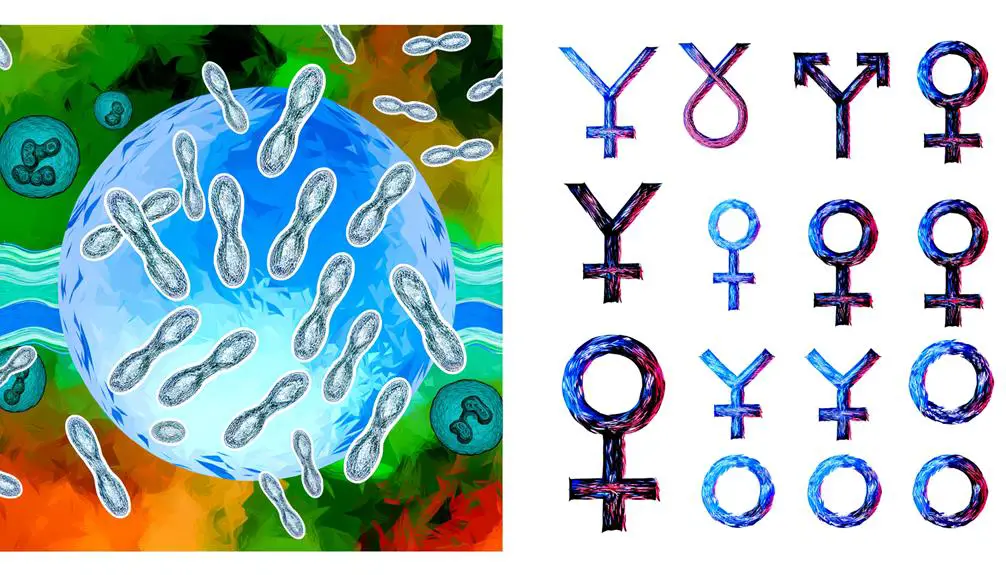
The biological significance of male and female symbols is deeply rooted in the fundamental differences between gender chromosomes, specifically the XY configuration in males and the XX configuration in females.
These symbols also encapsulate the distinct reproductive roles of each gender, with the male symbol often associated with the spear and shield, and the female symbol linked to the mirror of Venus, representing fertility and nurturing.
Understanding these associations provides a detailed framework for interpreting the broader implications of gender symbolism in biological contexts.
Gender Chromosome Differences
Gender chromosome differences play an essential role in determining the biological distinctions between male and female organisms. These differences primarily arise from the presence of specific sex chromosomes: XX in females and XY in males.
The biological significance of these differences includes:
- Sex Determination: The presence of Y chromosome triggers male development while its absence results in female development.
- Hormonal Influence: Chromosomal differences influence the production of sex hormones, such as estrogen and testosterone, which regulate secondary sexual characteristics.
- Genetic Inheritance: The X and Y chromosomes carry genes that impact various physiological and developmental processes, contributing to both health and disease.
Understanding these distinctions provides a foundation for comprehending the complex interplay between genetics and biology in gender differentiation.
Reproductive Role Symbols
Reproductive role symbols, often depicted as the Mars (♂️) and Venus (♀️) signs, carry significant biological implications that reflect the distinct reproductive functions of males and females. These symbols not only represent gender but also encapsulate the biological roles in human reproduction, hormone production, and genetic contribution. The following table summarizes these roles:
| Symbol | Biological Role | Key Functions |
|---|---|---|
| ♂️ | Male | Sperm production, testosterone secretion |
| ♀️ | Female | Egg production, estrogen and progesterone secretion |
| ♂️ | Male | Contributes Y chromosome for male offspring |
| ♀️ | Female | Provides mitochondrial DNA |
| ♂️ | Male | Supports fertility through spermatogenesis |
This clear delineation underscores the inherent biological differences that drive reproductive processes and genetic diversity.
Cultural Interpretations
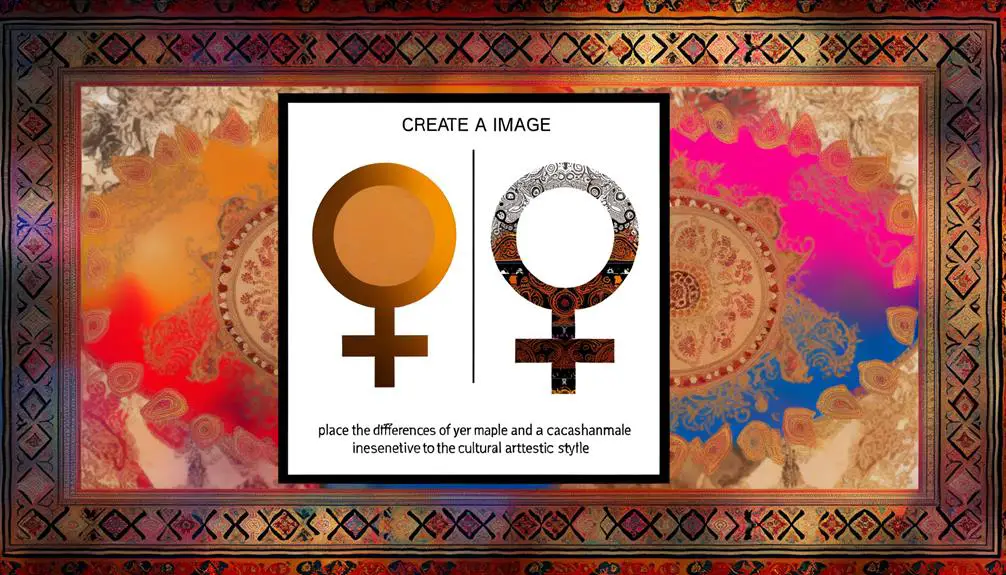
Cultural interpretations of male and female symbols are deeply rooted in ancient symbolism origins, which have greatly shaped societal perceptions over millennia.
These interpretations exhibit substantial cross-cultural variations, reflecting diverse societal norms and values.
In modern times, there is a notable shift in how these symbols are understood, influenced by evolving gender roles and increasing societal emphasis on inclusivity.
Ancient Symbolism Origins
The origins of the male (♂) and female (♀) symbols can be traced back to ancient civilizations, where they held profound cultural and mythological significance. These symbols, deeply embedded in the fabric of early societies, reflected broader cosmological views and spiritual beliefs.
Ancient Greece: The male symbol (♂) is linked to Mars, the god of war, and represents strength and aggression. The female symbol (♀) is associated with Venus, the goddess of love and beauty, symbolizing femininity and fertility.
Alchemy: In alchemical texts, these symbols denoted metals; iron for male (♂) and copper for female (♀), reflecting their inherent qualities.
Roman Mythology: The symbols were used to denote planetary bodies, further embedding their significance in both scientific and cultural frameworks.
This historical context underscores their enduring relevance.
Cross-Cultural Variations
Across various cultures, the male (♂) and female (♀) symbols have been reinterpreted to reflect diverse societal norms and values, illustrating the fluidity of their meanings beyond their ancient origins. In some societies, these symbols transcend biological distinctions, embodying broader philosophical or spiritual concepts. This adaptability is evident in cultural contexts where gender roles and identities are more fluid, and the symbols may be imbued with unique local significance.
| Culture | Male Symbol (♂) Interpretation | Female Symbol (♀) Interpretation |
|---|---|---|
| Western | Strength, Masculinity | Nurturance, Femininity |
| Indigenous | Hunter, Protector | Life-giver, Earth Mother |
| Eastern | Yang (Active, Sun) | Yin (Passive, Moon) |
| African | Warrior, Leader | Healer, Wisdom Keeper |
These variations underscore the dynamic interplay between symbols and cultural contexts, enhancing our understanding of gender across societies.
Modern Interpretations Shift
In contemporary contexts, interpretations of the male (♂) and female (♀) symbols have evolved to reflect more inclusive and diverse understandings of gender, challenging traditional binaries and embracing non-binary identities. This shift has resulted in the emergence of new symbols and meanings that better represent the spectrum of gender experiences.
Key aspects include:
- Non-Binary Representation: New symbols, such as the non-binary (⚧) symbol, have been introduced to encapsulate identities beyond male and female.
- Intersectionality: Modern interpretations consider the intersection of gender with other social categories like race, class, and sexuality.
- Activism and Advocacy: Movements advocating for gender inclusivity have driven the redefinition and acceptance of broader gender categories, fostering a more inclusive societal framework.
These changes signify a progressive shift towards recognizing gender diversity.
Modern Usage
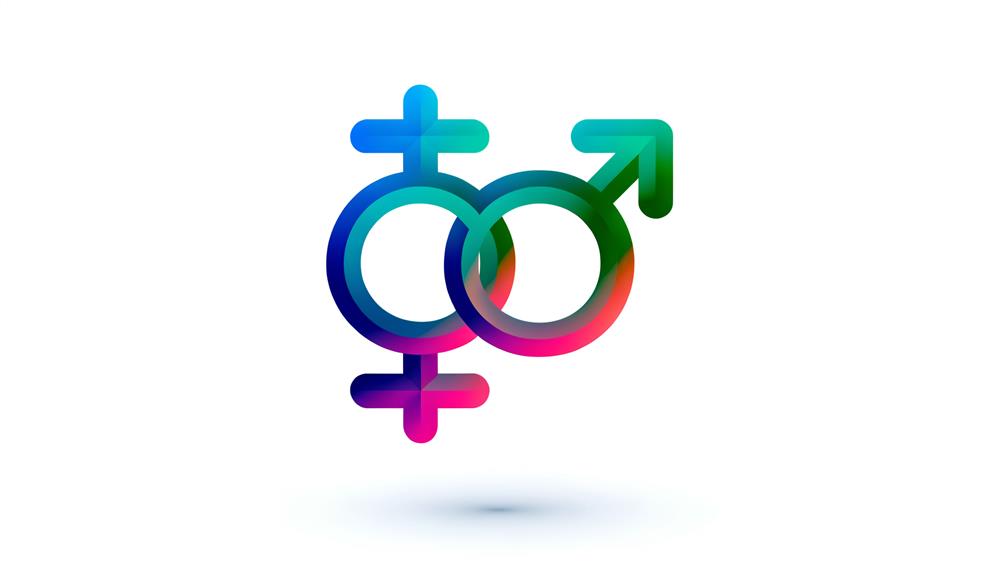
Contemporary applications of male and female symbols extend beyond traditional gender identification to encompass a broad spectrum of social, cultural, and political contexts.
In modern society, these symbols are often utilized in public signage to indicate restrooms, sports facilities, and other gender-specific spaces. Furthermore, they have become prominent in digital communication, appearing in emojis and online forms to denote gender options.
In academic and activist circles, these symbols serve as shorthand in discussions about gender equality, representation, and rights. Additionally, the evolving understanding of gender fluidity has prompted the inclusion of alternative symbols to represent non-binary and transgender identities.
This multifaceted usage underscores the dynamic nature of these symbols, reflecting ongoing societal shifts and the growing recognition of diverse gender expressions.
Controversies and Misunderstandings
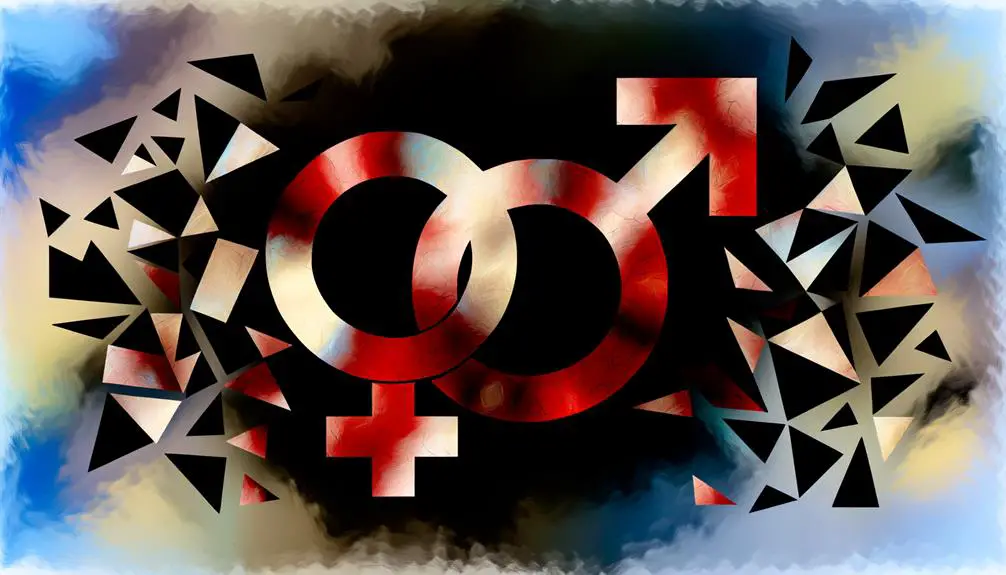
The use of male and female symbols has sparked numerous controversies and misunderstandings, primarily due to their perceived limitations in representing the full spectrum of gender identities. Critics argue that these symbols:
- Exclusionary Nature: They do not encompass non-binary, genderqueer, and other gender-diverse identities, leading to feelings of exclusion.
- Reinforcement of Binary Gender Norms: By emphasizing a binary framework, these symbols can perpetuate restrictive societal norms around gender.
- Misrepresentation: They may inaccurately suggest that gender identity is solely biological, ignoring the complex interplay of cultural, psychological, and social factors.
Such critiques underscore the need for more inclusive representations that acknowledge and validate the diversity of human gender experiences. Understanding these controversies is essential for fostering a more inclusive society.
Future Perspectives
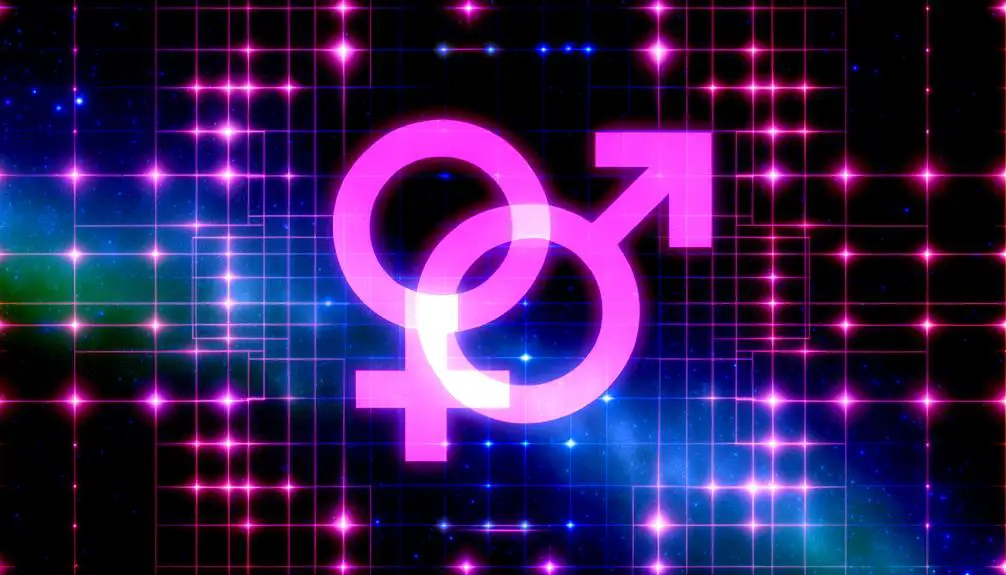
Recognizing the limitations and controversies surrounding traditional male and female symbols involves exploring future perspectives that foster greater inclusivity and representation for all gender identities.
As society progresses, it becomes crucial to develop symbols that reflect the spectrum of gender experiences. This includes integrating non-binary, genderqueer, and other identities that transcend the binary framework.
Contemporary discourse in semiotics and gender studies advocates for a dynamic approach, where symbols evolve alongside cultural and social understandings. Innovative design and thoughtful engagement with diverse communities can pave the way for symbols that resonate universally.
Future initiatives should prioritize collaboration with gender-diverse individuals to guarantee these symbols are both meaningful and respectfully representative, thereby advancing a more inclusive visual language.
Conclusion
The male and female symbols traverse a complex web of historical, astronomical, biological, and cultural significances. As a tapestry woven through time, these symbols encapsulate multifaceted meanings while evolving in modern contexts.
Despite controversies and misunderstandings, the symbols continue to serve as essential identifiers. Future perspectives may further unravel their complexities, fostering a deeper understanding of gender and identity.
Therefore, the symbols remain integral to both scholarly discourse and societal norms.


